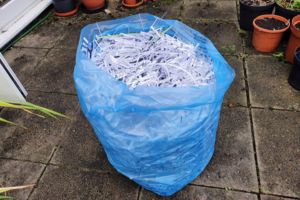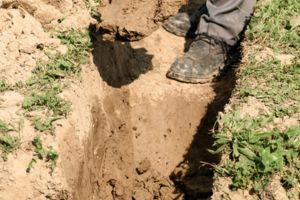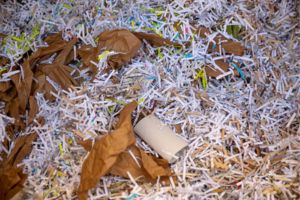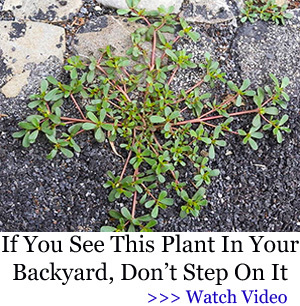Why You Need to Put Newspapers in Your Vegetable Garden

![]()
When you think of newspapers, your mind probably conjures up images of your dad reading the Sunday paper groaning about everything going wrong with the world.
Yet, when you think about newspapers in terms of your vegetable garden, you might be shocked at all the benefits it has to offer.
Modern-day newspapers have evolved from the ink-laden lead papers of ye olden times. Most of today’s newspapers are made from a blend of wood pulp and recycled paper, as well as chemically extracted components like lignin that act as a binder.
Many newspapers also have trace elements of other compounds like kaolin and calcium carbonate which give the paper a smooth feel and improve the newspaper’s brightness. Some also have special sizing agents, which give the newspaper a modicum of water resistance. Yet just enough to keep it from disintegrating when your paperboy leaves your Sunday edition out in the rain.
It’s important to note that when it comes to using them in your vegetable garden, you want to stay away from ad print and thick stock papers. This is usually anything glossy, that falls out of the center fold of the newspaper. These papers are less biodegradable, and also tend to have treatments or are printed with inks that aren’t good for your garden soil.
Most modern newspapers are printed with soy-based inks. This is important when it comes to using them in a vegetable garden, as old-fashioned petroleum/VOC-based inks can contaminate the soil.
 It’s worth noting that not 100% of newspapers use soy-based inks, so it’s wise to double-check before using them in your vegetable garden. Most large-run printers will state “Printed with Soy-Based Inks” somewhere on the front page or editorial page. Even if you can’t find it, you can usually call the newspaper directly to confirm.
It’s worth noting that not 100% of newspapers use soy-based inks, so it’s wise to double-check before using them in your vegetable garden. Most large-run printers will state “Printed with Soy-Based Inks” somewhere on the front page or editorial page. Even if you can’t find it, you can usually call the newspaper directly to confirm.
Newspapers printed with soy-based inks won’t have a petroleum odor when you smell it close. The newsprint on bold headlines will also lose its crisp edge when wetted and rubbed with a finger.
Lasagna gardening is a technique that uses sheets of newspaper and cardboard to quickly transform an area into a vegetable garden. This is a much faster method than removing the top two inches of topsoil to eliminate weeds in the new planting bed.
The layers of newspaper and cardboard gradually degrade, long after the weeds have died. Thus, allowing the deeper roots of vegetables, herbs, and flowers to gain access to the buried topsoil.
I’ve used this technique before on a hobby farm that had very sandy subsoil, a thin upper layer of topsoil, and a nasty infestation of rapier-like sandburs. The trick is to put down a layer of cardboard directly onto the topsoil. Then multiple layers of newspaper, followed by a thin layer of shredded newspaper mixed with fresh grass clippings.
A 4:1 ratio of shredded newspaper to grass clippings is ideal. This will provide microbes with the nitrogen they need to slowly break the newspaper and cardboard down over time. If you leave out the green/nitrogen material, it will take a very long time for the topsoil to become bioavailable.
If you put in too much green/nitrogen material the newspaper and cardboard layers of the lasagna garden will break down too rapidly. Some deep-rooted perennial weeds might be able to push back through your new garden bed in 8 to 10 weeks.
 On my old hobby farm, I did my best to organic techniques in the vegetable garden. Unfortunately, my organic mulch made from leaves and straw was sometimes sparse when it was time to spread a weed-blocking mulch layer in the garden and orchard.
On my old hobby farm, I did my best to organic techniques in the vegetable garden. Unfortunately, my organic mulch made from leaves and straw was sometimes sparse when it was time to spread a weed-blocking mulch layer in the garden and orchard.
Related: If You See This Weed Growing In Your Yard, Don’t Smell It
My trick for getting around this was to save up the free weekly newspaper that came in the Saturday mail. I’d run it through a paper shredder and turn it into the mulch material. I found that I could go as high as 40% newspaper, mixed with 60% natural materials to create a great weed-blocking mulch.
It was especially helpful around garden vegetables that needed a lot of water and at the base of my apple trees. As the shredded newspaper was often more absorbent than other organic materials. During dry spells, it really helped keep moisture near the roots in the otherwise sandy soil.
Shredded newspaper is great for vegetable gardens that use mounded rows or raised beds that have sandy soil with low carbon levels. This is a method I used to use on my old hobby farm to boost the soil’s moisture retention and overall carbon levels. However, it does take a little more elbow grease to get it right.
It’s ideal for sandy soil with raised rows where you can’t have a load of black dirt brought in. It’s also great for vegetables that grow best in a mound and need a lot of carbon as well as consistent moisture levels. This includes things like pumpkins, winter squash, summer squash, and even cucumbers.
Related: 10 Vegetables That You Can Stockpile Without Refrigeration for a Full Year
 First, you loosen the soil and build up your mounds or mounded rows. You want the mound structure to be at least 10 inches higher than the surrounding garden level.
First, you loosen the soil and build up your mounds or mounded rows. You want the mound structure to be at least 10 inches higher than the surrounding garden level.
Then dig a trench down to at least 2 inches below the garden level. It’s the sort of thing you need a shovel for and involves a lot of sweat equity.
Once you have a central trench dug. Lay down thick sheets of newspaper or cardboard and cover it with a 2-to-4-inch layer of shredded newspaper. The bottom layer will help prevent rainwater from simply passing through the sandy soil, while the shredded layer of newspaper helps boost absorption levels.
Cover this bottom layer with 2 inches of soil. Then lay down another 2 inches of shredded newspaper and scatter some aged chicken manure or fresh grass clippings. You want the newspaper carbon-to-nitrogen ratio to be around 25:1 to 30:1.
Cover this layer with another 2 inches of soil and repeat with another newspaper and grass clippings layer. Keep following this pattern until you completely rebuild the mound, with 2 inches of soil at the top.
The carbon material of the newspaper will gradually break down with the microbial fuel of the nitrogen. As this happens the roots of your garden plants will pass through layer after layer picking up the water, carbon, and other nutrients they need to grow strong.
If you have a compost pile or a compost tumbler, shredded newspaper is a great way to make sure you have the correct amount of carbon for the available nitrogen. Ideally, compost should be around 25 to 30 parts carbon for every 1 part of nitrogen.
 The problem is that a lot of the organic matter people use in their compost piles has a lot of nitrogen in it. This includes things like ordinary grass clippings and kitchen scraps.
The problem is that a lot of the organic matter people use in their compost piles has a lot of nitrogen in it. This includes things like ordinary grass clippings and kitchen scraps.
Depending on where you live, all-natural sources of carbon like leaves, and wood chips might be in short supply.
If the nitrogen level ends up being too high in your compost pile or tumbler, you can end up with a slimy stinky mess. It can even become prone to mold, bacteria, and other soil pathogens that you don’t want to introduce to your vegetable garden!
You can easily shred common newspapers to blend with the rest of your nitrogen-rich compost materials. The goal is to end up with a carbon-to-nitrogen ratio of around 25:1. However, even if you go as high as 35:1 the nitrogen and beneficial microbes will still be able to break down the newspaper. Your compost just might end up a little on the dry side.
Newspaper has a lot of great uses in a vegetable garden. Especially since most modern-day newspapers are printed with soy-based inks rather than VOC inks or ink with trace amounts of lead. However, you do want to stick to newsprint only, and not anything with a gloss finish like the advertising inserts in the Sunday paper.
Newspaper and cardboard can be used for lasagna gardening. It’s a great way to transform turf, high-weed areas and even small sections of lawn into a weed-free vegetable garden. Just make sure the newspaper layers are thick enough that any existing weeds will suffocate before it breaks down into the soil.
Shredded newspaper is also a great addition for mulch and compost. You can use it when all-natural organic mulch is in short supply to side-dress vegetable plants and boost moisture retention. You can also add shredded newspaper to your compost pile or tumbler to maintain the necessary 25:1 to 30:1 carbon-to-nitrogen ratio.
You can even use shredded newspaper to bulk up and add available carbon to raised bends and vegetable planting mounds. Just be sure to add some green nitrogen-rich material to the layers of shredded newspaper. This will help break down and make the carbon bioavailable to the vegetable plant’s roots as they grow deeper into the soil.
For those who are serious about gardening, becoming self-sufficient, and surviving whatever comes their way I strongly recommend this comprehensive guide. It offers invaluable insights and practical advice for transforming your backyard into a self-sustaining homestead.
You may also like:
 12 Native American Remedies That We Lost To History
12 Native American Remedies That We Lost To History
How to Grow a Food Garden Completely Hidden in Plain Sight (Video)
10 Household Items You Need To Stock Up on Before the Upcoming Great Depression
Self-Defense Weapons That Are Illegal in Your State. Do You Have One of Them?
DIY Rainwater Harvesting System
